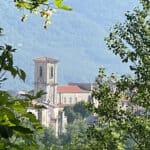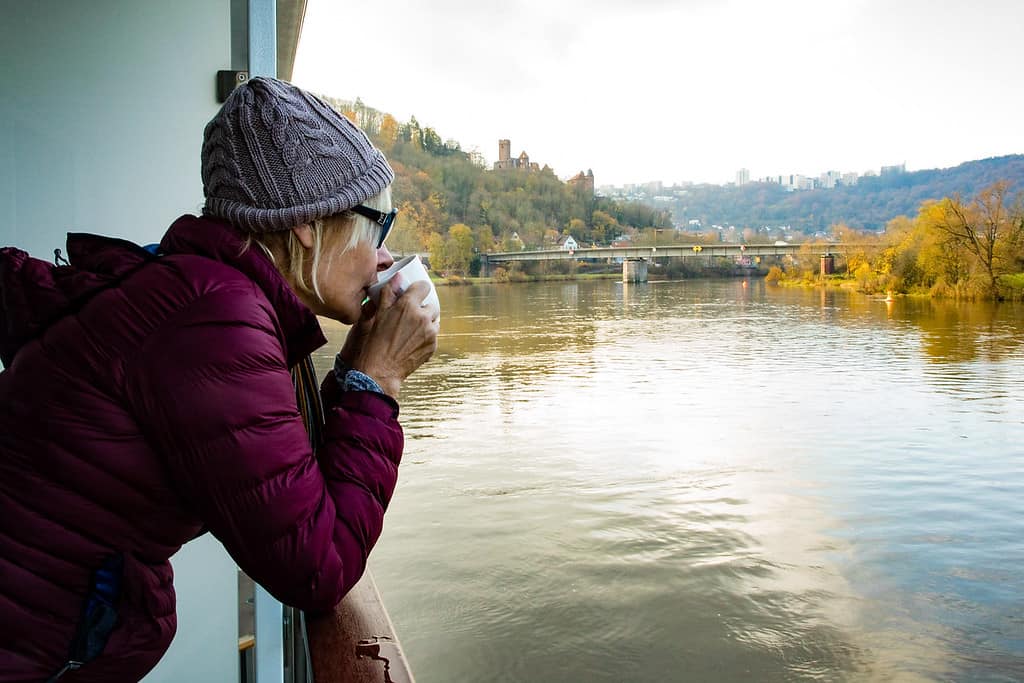Last Updated on: 20th November 2024, 02:26 am
Known in Italian as “Genova”, the lovely city of Genoa is the capital of Italy’s Liguria region.
Despite being Italy’s sixth largest city, most visitors arriving in Genoa tend to bypass the city and all its highlights, moving on quickly to other destinations along the Ligurian coast, such as Cinque Terre, Portofino or Sestri Levante.
But Genoa is a lovely, vibrant historical city with a lot to offer and fantastic food and is definitely worth spending a night or two there.
So, to answer the question, is Genoa worth visiting? Most definitely.
Here are some of the best things to do in Genoa.
Take A Free Walking Tour
When visiting a new city, a great way to get your bearings and learn about a place is to take a walking tour. I love the ones offered by Guru Walks, as the group size is usually no more than six people, and I haven’t done a bad or boring Guru Walk yet.
I did this one – Places, curiosities and flavours of Old Genoa- and it was probably the best I’ve ever done. Our guide, Simona, also gave plenty of recommendations and tips on where and what to eat. But more on that later.
Genoa Old Port (Porto Antico di Genova)

The Genoa Old Port is a historic harbour in Genoa. Built during the 12th century, it was the city’s main port for hundreds of years until the new port was built in the 20th century to accommodate the arrival of larger ships.
During the 1990s, the old port was completely renovated, so I guess it’s not quite as old as its name suggests. These days you will find many cafes, restaurants and bars, and it’s a nice place for a stroll along the waterfront. During the summer, the old port also serves as a departure point for many boat tours, whale-watching tours and cruises.
The popular attractions in the old port are the Aquarium of Genoa, the Galata Museum of the Sea and the Biosphere, a glass and steel bubble that recreates a tropical environment with butterflies and birds inside.
Bigo Panoramic Lift

The Bigo panoramic lift is next to the Genoa aquarium in the old port. For those not nervous about heights, at 40 metres high, it offers an interesting aerial perspective of the harbour and old town.
Tickets cost five euros (2023). To avoid queuing for tickets for the Bigo Lift, you can buy your ticket in advance here.
Note that if it gets sweltering in the summer, the lift doesn’t operate.
The Caruggi of Genoa’s Historic Centre

Genoa’s historic centre is the largest in Europe. The maze of alleyways, bordered by colourful houses, is called carruggi in the Genovese dialect.
Exploring these narrow lanes and alleyways is fun, and you will likely get hopelessly lost. Due to the tall buildings and narrow streets, you’ll find that Google Maps gets very confused. So just enjoy discovering the ancient churches, charming piazzas, artisan shops, historical cafes and noble residences and hope you’ll find your hotel or guesthouse again at some point.
Taking that walking tour at the start of your trip will certainly help with navigating the caruggi.
Genoa Cathedral

The Cathedral of San Lorenzo, the most important church in Genoa, dates back to the 12th century.
The cathedral has only one bell tower, whereas most have two. Nobody seems to know the why, but the most likely reason was the lack of money to build the other one or because they ran out of the same material.
Look for the sculpture of a small dog carved in marble on the church’s exterior wall. Apparently, a little dog would always hang out with the builders and sculptors when the cathedral was being built. One day the little dog disappeared and was never seen again, so the sculptors dedicated this small sculpture to him.
Inside the cathedral, the interior is an unusual mix of medieval and Renaissance artistic styles. The relics of San Lorenzo, which arrived in Genoa after the Crusades, are kept in the cathedral’s basement in the Museum of the Treasure.
Ducal Palace ( Palazzo Ducale)
The Ducal Palace is just a few metres from the Cathedral of San Lorenzo. This 13th-century elegant palace is now an exhibition space for exhibitions, conferences, and other cultural events.
Please check the Ducal Palace website for information on events, ticket prices, and opening hours.
Piazza De Ferrari

Piazza De Ferrari is Genoa’s main square. It’s located in the heart of the city between the historical and modern districts.
At the centre of this large square is a fancy bronze fountain. Overlooking the piazza is the Carlo Felice Theatre, the Palazzo dell’Accademia Ligustica di Belle Arti, Palazzo Ducale, Palazzo della Regione Liguria and the Palazzo della Nuova Borsa.
Via XX Settembre
Via XX Settembre is Genoa’s main shopping street. It’s named after the Capture of Rome on September 20th 1870, when the end of the Papal States was declared.
Porta Soprana
The 9th – 10th century Porta Soprana is the only ancient entrance door to the city that has remained intact.
House of Christopher Columbus

Right by the Porta Soprana is the house of Christopher Columbus.
The house was rebuilt during the eighteenth century on the remains of the original house where Christopher Columbus spent his childhood.
According to documents, Christopher Columbus’ father, Domenico Colombo, moved to the house in Genoa in 1455 until 1470, when Christopher Columbus was four years old. His father used the house’s ground floor as a workshop, and the family lived upstairs.
If you are interested in a twenty-minute guided tour, the house museum isn’t very big; you can buy your ticket in advance here.
The Palazzi dei Rolli
An interesting street to walk along in Genoa is Via Garibaldi, also known as Strada Nuova, which means New Street. But actually, the impressive buildings on this street were built between 1500 and 1600, so they were hardly new and were once the residences of the Genoese nobility.
The Palazzi dei Rolli are 42 palaces designated as lodging for important guests of the Republic of Genoa.
The term “rolli” refers to the lists of noble families required to provide lodging for important state guests.
Many of these palaces have been restored and are open to the public as museums and galleries. They are recognized as a UNESCO World Heritage Site as they are considered to be some of the best examples of Renaissance and Baroque architecture in Italy.
The Municipality of Genoa organizes Rolli Days three times a year, where the buildings are open to the public and can be visited.
If you’re interested in visiting some of the Palazzi dei Rolli, I can recommend this guided tour.
Palazzo Reale

The Palazzo Reale is one of the 42 palaces of the Palazzi Rolli of Genoa included in the list of UNESCO World Heritage Sites.
Originally built in the 17th century, the Palazzo Reale (Royal Palace) was the Durazzo family’s residence. It later became the home of the Savoy dynasty when they took control of the city in the 19th century.
Today, the Palazzo Reale is a museum with a wide range of art and artefacts from different periods in Genoa’s history.
Church of the Holy Annunziata ( Chiesa dell’Annunziata)

Just a short walk from the Palazzo Reale at the end of via del Campo, you’ll come to the Chiesa dell Annunziata. The church looks very plain from the outside, and the Piazza dell’Annunziata it stands on is certainly not the most beautiful square in Genoa.
But step inside; if you like Baroque art, this church has one fancy interior. The church is free to enter.
Esplanade of Castelletto (Spianata Castelletto)

The Spianata Castelletto is located on a hill overlooking Genoa and offers incredible views of the old city, the port, and the Mediterranean Sea. It’s named after a small castle that once stood on this spot.
As well as the view, it’s a nice place to enjoy an ice cream or an aperitivo.
If you don’t fancy the walk up to the viewing area, you’ll be pleased to know you can take a historic Art Nouveau-style lift up to the top, and it’s free.
The Lantern
The lantern is one of the symbols of Genoa. Built in 1353, it’s one of the oldest lighthouses in the world still in operation and the second highest in Europe.
It has two terraces, but only one is open to the public. To reach the lantern, take the 800-metre wooden walkway from the ferry terminal.
To admire the view from the top, you need to climb up 172 steps.
Legend says that the lantern builder was thrown into the sea to avoid him recreating the same work elsewhere, or was it because the Genoese did not want to pay him at the end of the work?
If you’re interested in visiting the lighthouse, you can buy your entrance ticket here.
Boccadasse Village

Boccadasse is a picturesque fishing village and neighbourhood in the eastern part of Genoa. Once isolated, it was easier to reach the village by sea than by land.
With its colourful buildings, narrow streets, and small beach, it looks like the villages of Cinque Terre. There are a few bars and cafes in Boccadasse and shops selling local crafts and souvenirs.
The beach was incredibly busy for a sunny Monday afternoon in March; I dread to think what it would be like in summer. But step away from the tiny beach and wander the small streets and around the colourful houses; it is a whole different atmosphere.
How To Get To Boccadasse
On Foot
Today, Boccadasse can be reached by walking along the Corso Italia promenade, which was built during the early twentieth century.
The walk along Corso Italia towards Boccadasse is a pleasant seaside stroll. But if you are coming from the old port like me, the first part is walking alongside a busy highway. There are lots of building works by the sea, so maybe this section will be a pleasant walk one day, but it’s not now.
To skip the ugly part of the walk, take bus 31 and get off at the Piazzale Kennedy stop. And then walk one and a half kilometres along the Corso Italia.
The other walking option, which was much nicer, was along the shopping street XX Settembre, past the MOG ( Mercato Orientale of Genoa), Victory Square and through the lovely residential neighbourhood of Albaro.
Walking time is around one hour.
By Bus
Don’t fancy walking? Then take bus 31 from the Genova Brignole Train Station.
Anita Garibaldi’s Promenade (Passeggiata Anita Garibaldi) Nervi

The two-kilometre Anita Garibaldi’s promenade is a beautiful coastal walk through Nervi. If you want to stay close to the city of Genoa but not actually in Genoa, then Nervi would make a perfect base.
The path starts from the old harbour (Porticciolo) to Capolungo at the other end of the village.
It can get crowded at times, so avoid weekend afternoons, but on a sunny mid-week afternoon in March, it was just perfect.
At the end of the path, you will reach Nervi Park, famous for its squirrels and a 150-year-old, 10-metre tall Gigante del Cile, a Chilean wine palm.
There are many cafes and bars along the path. I had a lovely simple lunch at Gnam Gnam, with a gorgeous sea view from its terrace. Gnam Gnam is in Quinto, one stop away on the train from Nervi, but the Da Pino restaurant by the old harbour in Nervi at the beginning of the promenade looked like an excellent place for lunch, too.
How To Get To Nervi From Genoa
Take the train from Genoa to Genova Nervi. If you wish to lunch at Gnam Gnam, disembark one stop earlier at Genova Quinta, then follow the coast until you reach the start of Passeggiata Anita Garibaldi.
Ferry And Whale Watching Tours From Genoa
Whale-watching tours are offered every Thursday evening from mid-June to mid-September from the old port next to the Aquarium.
And from April to October, ferries operate to Camogli San Fruttoso and Portofino, and Monterosso Cinque Terre from June to September every Tuesday and Saturday.
Where To Eat In Genoa
Breakfast
There are many coffee shops all over the old city. I have to admit I’m not a massive fan of Italian breakfasts – they are a bit too sweet for me. I need lots of coffee and preferably something savoury.
And for that savoury fix, I can highly recommend the Caffè Fratelli Nadotti. They serve excellent coffee, a good selection of savoury items and perfect toasties. And with being so close to the Red Light district, it’s also an interesting spot for people-watching.
Lunch
The Trattoria da Maria is a very popular local place with excellent food at very affordable prices. I had a lovely pasta dish here with Genovese pesto and a bottle of sparkling water, and I only spent six euros -my sort of place.
Trattoria da Cici – A little smarter than Trattoria da Maria and offering a good selection of Ligurian cuisine with plenty of Genovese pesto, which I had become totally addicted to during my time in this region.
Aperitivo
I do enjoy having an aperitivo. Aperitivo comes from the Latin word aperire, meaning to open, so the tradition of a pre-meal drink is “to open” the stomach before dining.
However, your drink often comes with so many nibbles – olives, cheese, prosciutto etc. that you can end up being too full to eat dinner.
My favourite spot in Genoa for an aperitivo was around Piazza Lavagna.
Other popular spots in Genoa for an aperitivo are Calice on Spianata Castelletto and around Piazza Pollaiuoli and Piazza delle Erbe.
Dinner
Trattoria delle Grazie – a very popular trattoria. So, it would be best if you got there before the doors open at 7:30 pm to get a seat. Even on a Monday night in March, I had to queue, but it was a lovely dinner with wine, and the total cost was less than 20 euros.
Buca di San Matteo is another excellent place for dinner- a little fancier than Trattoria delle Grazie, but easier to find a table and with fabulously delicious food.
How To Get Around Genoa
Most of the historic sites are all within easy walking distance of each other. Genoa has a metro system, it’s not the biggest one in the world, just eight stops, but it’s free to use between 10 am and 4 pm and from 8 pm to 10 pm.
Also, a great way to reach viewpoints, like the Spianata Castelletto, you can take the funiculars, which are free to use all the time.
Note: Google Maps gets a bit confused in the narrow alleys of the old town. You will get lost, but that’s all part of the fun.
How Many Days Do You Need In Genoa?
If this is your first time visiting Genoa and you are planning to stay in other towns in Liguria, then two full days in Genoa would be perfect. If you plan to use Genoa as a base and take a few day trips, I’d suggest five days to a week.
Where To Stay In Genoa?
Interesting Fact (Well, I Think It Is!)

Did you know that the Genovese and the England flags are the same?
Why? Well, the once powerful maritime city of Genoa, with its established trading colonies throughout the Mediterranean and the Black Sea, adopted the St George’s Cross as its flag and St George as its patron saint during the Crusades.
Although there are various versions of why the flag is the same, the more recent suggests that during the Third Crusade, a deal was made between the English and the Doge of Genoa to use the St George’s Cross so that the enemies assumed the English were Genovese and hence ensured a safe crossing and protection against enemies.
For this privilege, the English monarch would pay an annual fee to the ruler of the Republic of Genoa. However, according to the Mayor of Genoa, after the Republic of Genoa collapsed, England did not keep to its side of the bargain, and so, for the last 250 years, the English flag has essentially been stolen property.
In 2018, Marco Bucci, the mayor of Genoa, said he would write to Queen Elizabeth, hoping to recoup funds that could then be spent on the city’s needs.
“Your Majesty, I regret to inform you that from my books [it] looks like you didn’t pay for the last 247 years,” he joked.
Have You Been To Genoa?
Have you been to Genoa? Did I miss anything? Please tell me in the comments.
For More Posts On Italy, Check These Out
Check out these posts for other amazing places to visit around Italy.
One Perfect Day In Locorotondo
Visiting Alberobello, Puglia’s Trulli Town
One Day in Polignano a Mare, Puglia
Best Things To Do In Sestri Levante
Spello, A Gorgeous Town in Umbria
Ortisei Italy – A Great Base For Exploring The Dolomites
Best Towns and Villages in Umbria
Exploring Orvieto – A Fabulous And Easy Day Trip From Rome By Train
How To Spend One Full Day In Bologna
Why You Should Visit Ferrara – An Easy Day Trip From Bologna
Varenna- The Perfect Base For Exploring Lake Como
How To Spend One Full Day (and a little bit) In Milan
Four Really Easy Day Trips From Rome By Train
Diary Of A Solo Traveller On A Viking Ocean Cruise From Barcelona To Rome

Save This Post On Is Genoa Worth Visiting? For Later!
Disclaimer: Some of the links on this website are “affiliate links”, meaning that if you click on the link and make a purchase, I will receive a small commission at no extra cost. This helps me to keep my website running and continue to share my travelling knowledge with you. Thank you for using the links on my website.







You’ve convinced me that Genoa is definitely worth visiting the next time I’m in Italy. I also love to take walking tours when I first arrive in a city. And would love to wander the maze of alleys in the historic area.
This is a part of Italy we have yet to spend much time in and we always wondered if Genoa was worth visiting. I like the idea of starting with a walking tour. Especially if the guide has great tops for places to eat! Lots of lovely architecture to see as we explore. Great that old palaces have been re-purposed for public uses. Definitely worth planning a few days visit.
I think Genoa is underrated as a travel destination in Italy. You’ve captured a lot of its stunning architecture!